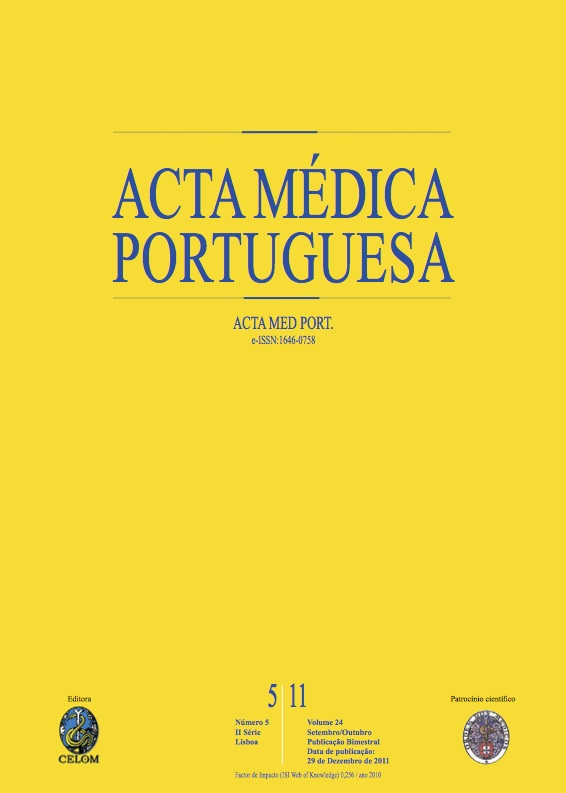Nefropatia de contraste.
DOI:
https://doi.org/10.20344/amp.504Resumo
Contrast-induced nephropathy (CIN) is an iatrogenic disorder, resulting from procedures requiring the intravascular administration of iodinated contrast media. It has an association with increased morbidity and mortality, increased costs and it remains the third most common cause of hospital-acquired kidney failure. CIN is usually defined as an increase in serum creatinine by either at least 0.5 mg/dl or by 25% from baseline within the first 48 hours after contrast administration, in the absence of other causes of renal function impairment. In its pathogenesis have been implicated 2 main mechanisms: renal vasoconstriction resulting in medullary hypoxia and direct cytotoxic effects of the contrast agents. There are several risk factors for radiocontrast nephrotoxicity but patients with underlying renal insufficiency or diabetic nephropathy with renal insufficiency have the greatest risk. Other classic risk factors include: advanced age, peri-procedural intravascular depletion, congestive heart failure. Finally, toxicity also depends on the volume, type of contrast administered and concomitant use of other nephrotoxic drugs. Since there is no specific treatment for CIN and it is limited to supportive measures, prevention is the best way to deal with this condition. In this setting it is important to use lower doses of a low or iso-osmolal agent and avoid volume depletion. Nowadays it is recommended to do volume expansion prior to and continued for several hours after the procedure. Randomized controlled trials suggest that isotonic intravenous fluids, particularly isotonic bicarbonate, confer better protection. Several pharmacologic approaches have been tested to decrease the risk of CIN in patients with preexisting renal disease, based in the mechanisms by which contrast medium is believed to cause nephrotoxicity. However, with the exception of some antioxidant agents, few of those adjunctive therapies have shown any consistent benefit. N-Acetylcysteine is the most widely studied of all prophylactic strategies and despite conflicting data it is advised to do an elevated dosage orally twice daily, the day before and the day of the procedure, based upon its potential for benefit, low toxicity and cost. This article pretends to review CIN pathogenesis, risk factors, clinical course, treatment and prevention. The authors propose themselves a prevention protocol for risk patients based on the latest clinical evidence.Downloads
Downloads
Como Citar
Edição
Secção
Licença
Todos os artigos publicados na AMP são de acesso aberto e cumprem os requisitos das agências de financiamento ou instituições académicas. Relativamente à utilização por terceiros a AMP rege-se pelos termos da licença Creative Commons ‘Atribuição – Uso Não-Comercial – (CC-BY-NC)’.
É da responsabilidade do autor obter permissão para reproduzir figuras, tabelas, etc., de outras publicações. Após a aceitação de um artigo, os autores serão convidados a preencher uma “Declaração de Responsabilidade Autoral e Partilha de Direitos de Autor “(http://www.actamedicaportuguesa.com/info/AMP-NormasPublicacao.pdf) e a “Declaração de Potenciais Conflitos de Interesse” (http://www.icmje.org/conflicts-of-interest) do ICMJE. Será enviado um e-mail ao autor correspondente, confirmando a receção do manuscrito.
Após a publicação, os autores ficam autorizados a disponibilizar os seus artigos em repositórios das suas instituições de origem, desde que mencionem sempre onde foram publicados e de acordo com a licença Creative Commons









